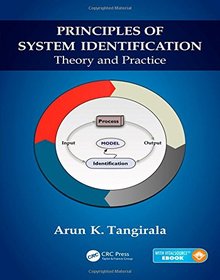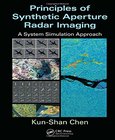Principles of System Identification
Theory and Practice

Book Details:
| Publisher: | CRC Press |
| Series: | CRC Press , Principles |
| Author: | Arun K. Tangirala |
| Edition: | 1 |
| ISBN-10: | 1439895996 |
| ISBN-13: | 9781439895993 |
| Pages: | 908 |
| Published: | Dec 22 2014 |
| Posted: | Mar 20 2017 |
| Language: | English |
| Book format: | |
| Book size: | 8.34 MB |
Book Description:
Master Techniques and Successfully Build Models Using a Single Resource Vital to all data-driven or measurement-based process operations, system identification is an interface that is based on observational science, and centers on developing mathematical models from observed data. Principles of System Identification: Theory and Practice is an introductory-level book that presents the basic foundations and underlying methods relevant to system identification. The overall scope of the book focuses on system identification with an emphasis on practice, and concentrates most specifically on discrete-time linear system identification. Useful for Both Theory and Practice The book presents the foundational pillars of identification, namely, the theory of discrete-time LTI systems, the basics of signal processing, the theory of random processes, and estimation theory. It explains the core theoretical concepts of building (linear) dynamic models from experimental data, as well as the experimental and practical aspects of identification. The author offers glimpses of modern developments in this area, and provides numerical and simulation-based examples, case studies, end-of-chapter problems, and other ample references to code for illustration and training. Comprising 26 chapters, and ideal for coursework and self-study, this extensive text: Provides the essential concepts of identification Lays down the foundations of mathematical descriptions of systems, random processes, and estimation in the context of identification Discusses the theory pertaining to non-parametric and parametric models for deterministic-plus-stochastic LTI systems in detail Demonstrates the concepts and methods of identification on different case-studies Presents a gradual development of state-space identification and grey-box modeling Offers an overview of advanced topics of identification namely the linear time-varying (LTV), non-linear, and closed-loop identification Discusses a multivariable approach to identification using the iterative principal component analysis Embeds MATLAB codes for illustrated examples in the text at the respective points Principles of System Identification: Theory and Practice presents a formal base in LTI deterministic and stochastic systems modeling and estimation theory; it is a one-stop reference for introductory to moderately advanced courses on system identification, as well as introductory courses on stochastic signal processing or time-series analysis.The MATLAB scripts and SIMULINK models used as examples and case studies in the book are also available on the author's website: http://arunkt.wix.com/homepage#!textbook/c397
Download Link:
Related Books:
Nonlinear System Identification
NARMAX Methods in the Time, Frequency, and Spatio-Temporal Domains
Nonlinear System Identification: NARMAX Methods in the Time, Frequency, and Spatio-Temporal Domains describes a comprehensive framework for the identification and analysis of nonlinear dynamic systems in the time, frequency, and spatio-temporal domains. This book is written with an emphasis on making the algorithms accessible so that they can be applied and used in practice.Includes coverage of:The NARMAX (nonlinear autoregressive moving average with exogenous inputs) modelThe orthogonal least squares algorithm that allows models to be built term by term where the error reduction ratio reveals the percentage contribution of each model termStatistical and qualitative model validation methods that can be applied to any model classGeneralised frequency ...
Principles of Synthetic Aperture Radar Imaging
A System Simulation Approach
Principles of Synthetic Aperture Radar Imaging: A System Simulation Approach demonstrates the use of image simulation for SAR. It covers the various applications of SAR (including feature extraction, target classification, and change detection), provides a complete understanding of SAR principles, and illustrates the complete chain of a SAR operation. The book places special emphasis on a ground-based SAR, but also explains space and air-borne systems. It contains chapters on signal speckle, radar-signal models, sensor-trajectory models, SAR-image focusing, platform-motion compensation, and microwave-scattering from random media. While discussing SAR image focusing and motion compensation, it presents processing algorithms and applications that f...
Principles of Web Design
The Web Technologies Series
5th Edition
Joel Sklar has written the definitive text for Web site design, PRINCIPLES OF WEB DESIGN, Fifth Edition guiding readers through the entire Web site creation process, while developing and enhancing your HTML, CSS, and visual design skills along the way. Now updated to include the latest Web design technologies and trends, this Fifth Edition features all-new sections on HTML5, CSS3, CSS page layouts, and enhanced navigation as well as technical updates and new screen shots throughout. Beginning with the Web design environment and the principles of sound Web design, readers will continue to planning site layout and navigation, and progress to Web typograp...
2007 - 2021 © eBooks-IT.org



